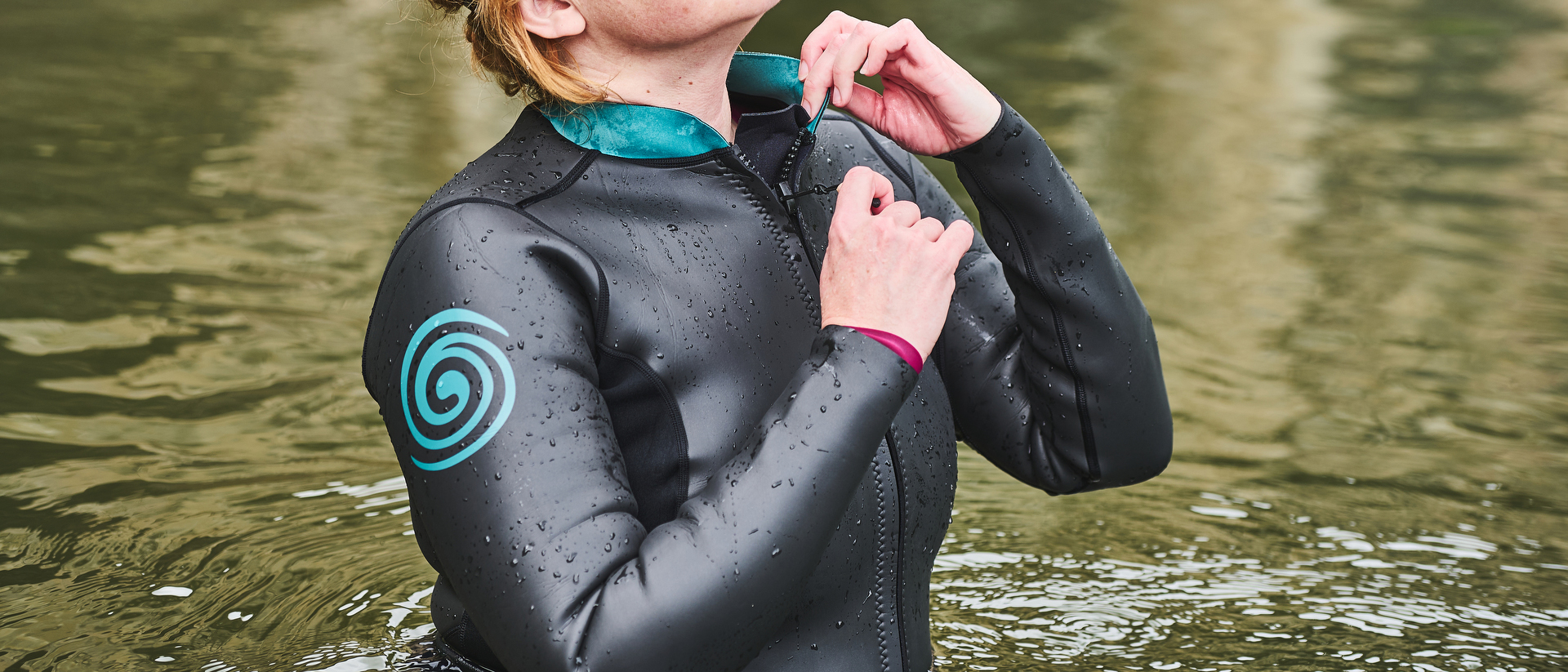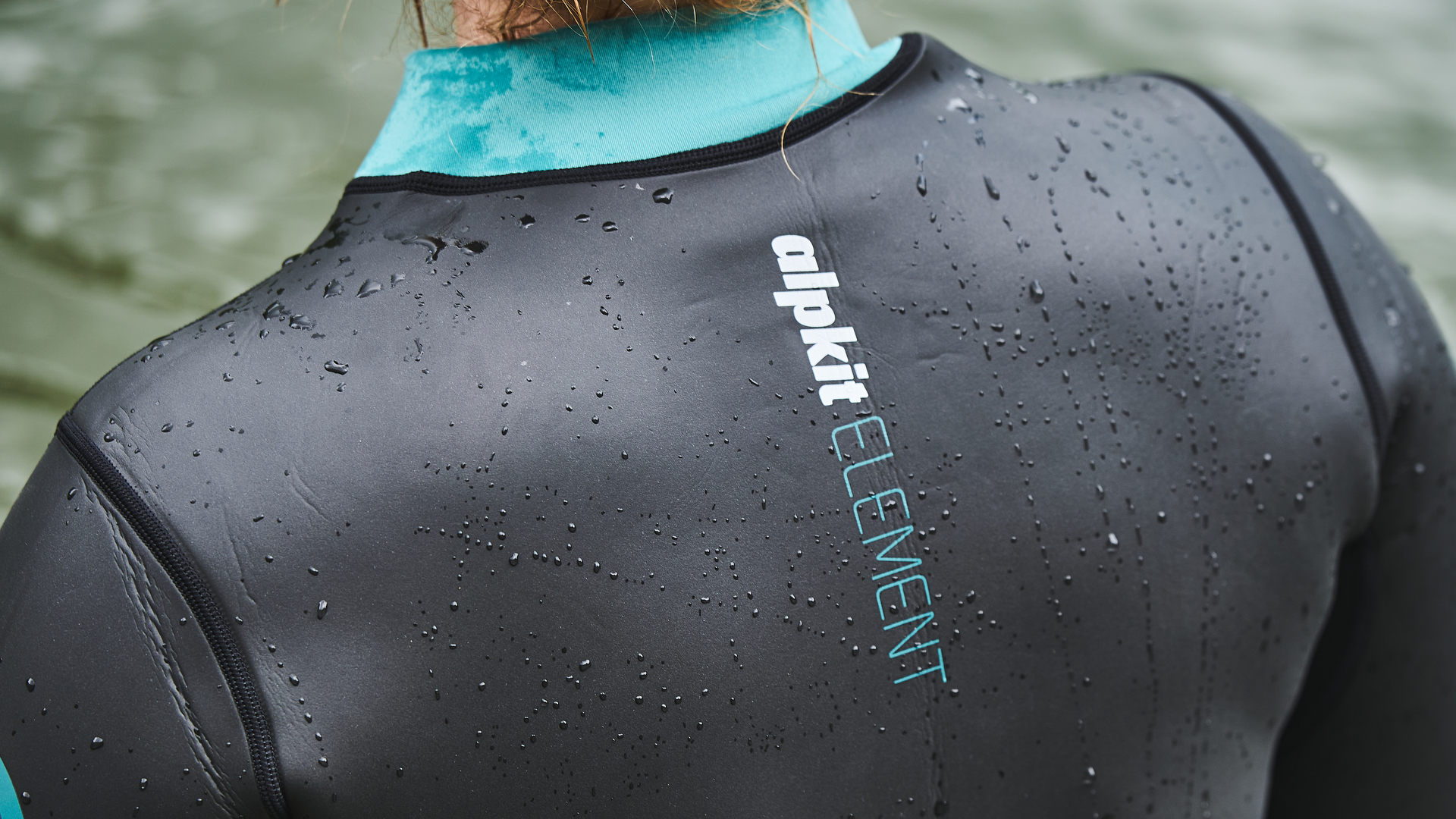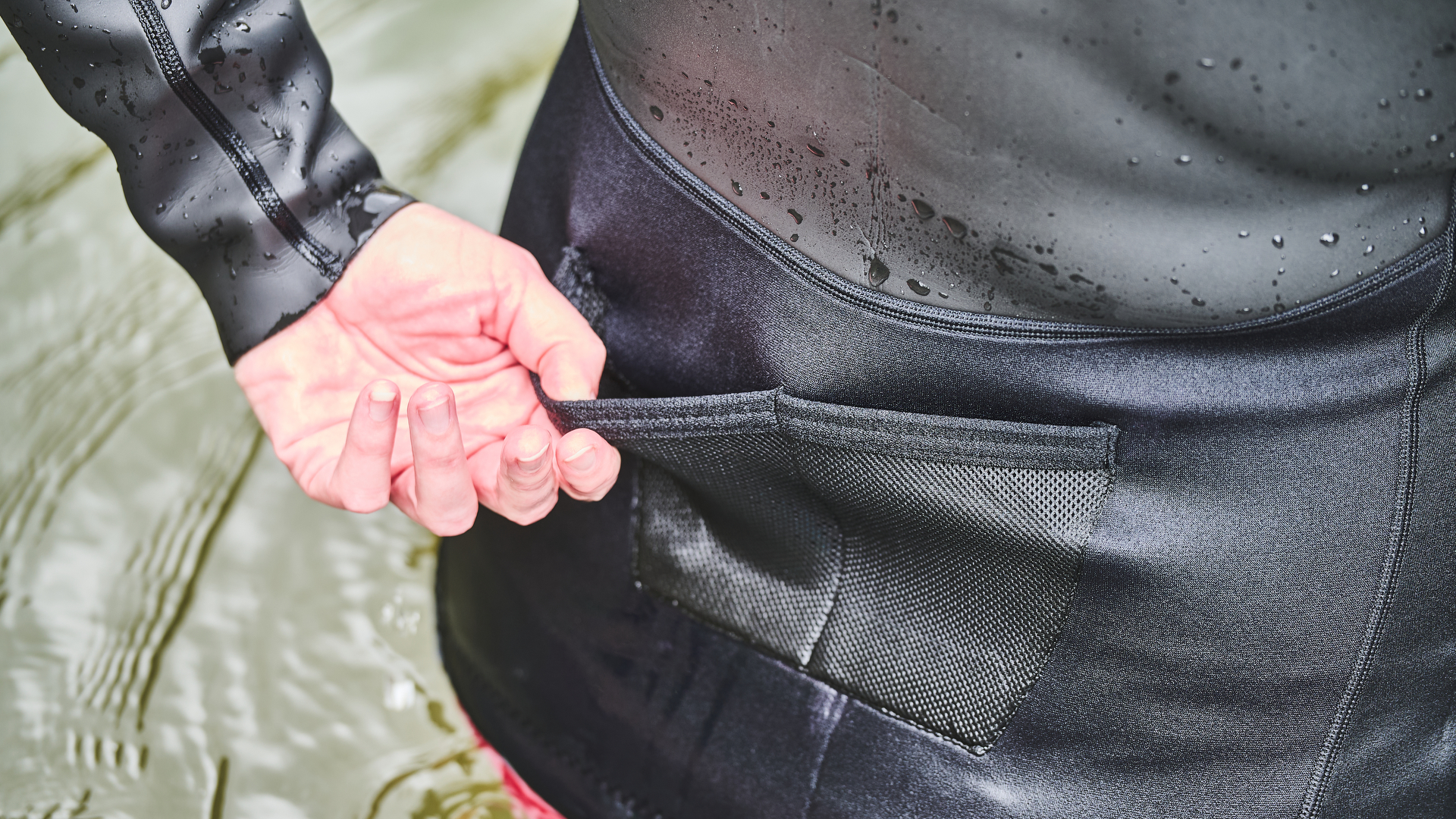
Meet the reviewer
Alpkit Element wetsuit jacket : first impressions
• List price: £99.99 (UK)
• Materials: Glideskin (Yamamoto limestone neoprene)
• Gender availability: Men's and women's versions available
• Weight (women's M): 1.6kg / 3.5lb
• Sizes available: S-XXL
• Colors (all sizes): Black
• Best use: Paddle boarding, sailing, casual swimming
So before I wade in, I need to say that I really wanted to like the Alpkit Element wetsuit jacket. As a long-distance swimmer with many miles behind me, I have never relished the rigmarole of hauling on a wetsuit or peeling it off while cold and wet.
The idea of a zip up wetsuit jacket therefore massively appealed to me for training swims. Or at least it did until I tried it on, because in my view this jacket has a fairly significant design flaw if you want to swim crawl/freestyle in it. The star ratings here reflect my view that for paddle boarding it's a 4 star garment, but for swimming I can only give it 2 stars. More on why next…

Normally my first port of call when trialling a new wetsuit is to put in some serious open water miles. I have been swimming wild long before it was fashionable and the idea of a two hour swim makes me smile rather than shudder. But I honestly didn’t dare do that with the Alpkit Element wetsuit jacket.
The shoulder is one of the most complex and delicate joints in the body. Most swimmers have a slight imbalance in their stroke and I’m no exception. Over time that leads to niggles for most, and in my case means I’m prone to pain in my left shoulder if I am not careful about technique or clocking excessive mileage.
Because of this, in my view, the best swimming wetsuits should be designed to be as flexible as possible in the shoulder. If you look at the specs for one you will normally find the neoprene in this area will be thinner than elsewhere - for example my (very) old favorite swim wetsuit has 2mm thick neoprene in the shoulder and 4mm thick neoprene in the legs. The 2mm neoprene allows range of motion, while the 4mm neoprene helps my legs float and keeps warm the part of my body that’s moving the least on long swims. Alpkit’s all in one swimming wetsuits all use a raglan style seam, that is one that runs diagonally from the underarm to the side neck, giving great freedom of movement while minimizing the chance of excess material bulking up and causing drag or discomfort.
So why has Alpkit stuck a vertical sleeve join in its Element jacket? It’s not clear how thick the neoprene is here - from the information on the Alpkit website it could be 2.5mm or 3mm. But the garment construction used, known as a set in sleeve, means that you end up with more fabric here than if you used a diagonal seam.
This means that there is a lump of neoprene bunching up every time you rotate your arm, which is noticeably restrictive when rotating your arm in crawl/freestyle. The neck also ran a little loose on me, so it’s not going to be as effective at keeping water out as one with a tighter fit - again, more an issue for swimmers than paddle boarders.

Alpkit Element wetsuit jacket: in the water
Alpkit is marketing this jacket as being for paddle boarders and swimmers. And I think it’s a pretty great paddle board jacket. It’s impressively warm, has extra long sleeves you can cut to length if needed (I have very long arms so I have only trimmed them a touch since these pictures were taken), and is many times easier to get on and off than a normal wetsuit.
It also has two small mesh back pockets. Again, very handy for someone paddle boarding who might want to stow sunglasses, sun cream and some snacks there. But if you’re swimming then whatever is in this pocket has a fair chance of floating out unless the jacket is a real tight fit.
The jacket is a mix of stretch panels and Glideskin neoprene, a type of Yamamoto limestone neoprene, which is made from limestone and plant oils rather than traditional neoprene. A massive thumbs up for me, as traditional neoprene is not only highly toxic to produce, it is also very difficult to recycle and doesn’t break down easily.
Because of the smooth Glideskin neoprene used, this jacket isn’t suitable for surfing in - lying on your stomach on a rough surfboard is likely to tear up the material in my experience. It is ideal for paddle boarding, however, and beautifully warm. But I’m just not convinced that it’s suitable for serious swimming - certainly not if you’re swimming crawl/freestyle and need a lot of freedom of movement around the shoulder. I haven’t yet had a chance to try one of Alpkit’s swim wetsuits, but their shoulder construction looks far more suitable for swimming’s range of movement. So if you’re a paddleboarder I’d recommend this jacket, but if you want to swim, a traditional swim wetsuit is probably a safer bet.

Alpkit Element wetsuit jacket: Getting changed
It’s very easy to get on the jacket and off, with a full length zip, which also allows you to vent and dump heat quickly if you’re wearing it for paddle boarding on warmer days. I really appreciated the ‘cuttable’ arms as I often find wetsuits are too short in the arm for me, and so haven’t trimmed them at all.
Getting in and out of a swimming wetsuit is such a pain that in winter I don’t actually wear one. It’s just easier to stick with neoprene boots and gloves and a normal swimsuit. I like the idea of using this jacket in winter, as it would extend the amount of time I could swim, but then would be very easy to get off quickly, reducing the loss of body heat in icy conditions. In winter I don’t usually put my face in the water, and instead swim breaststroke, when the issue about the shoulder bunching wouldn’t be such a worry, as you’re not rotating your shoulder fully.
- How Advnture tests products
- The best wild swimming gear: what to wear and what to take
- How to stay safe in open water: wild swimming for beginners







